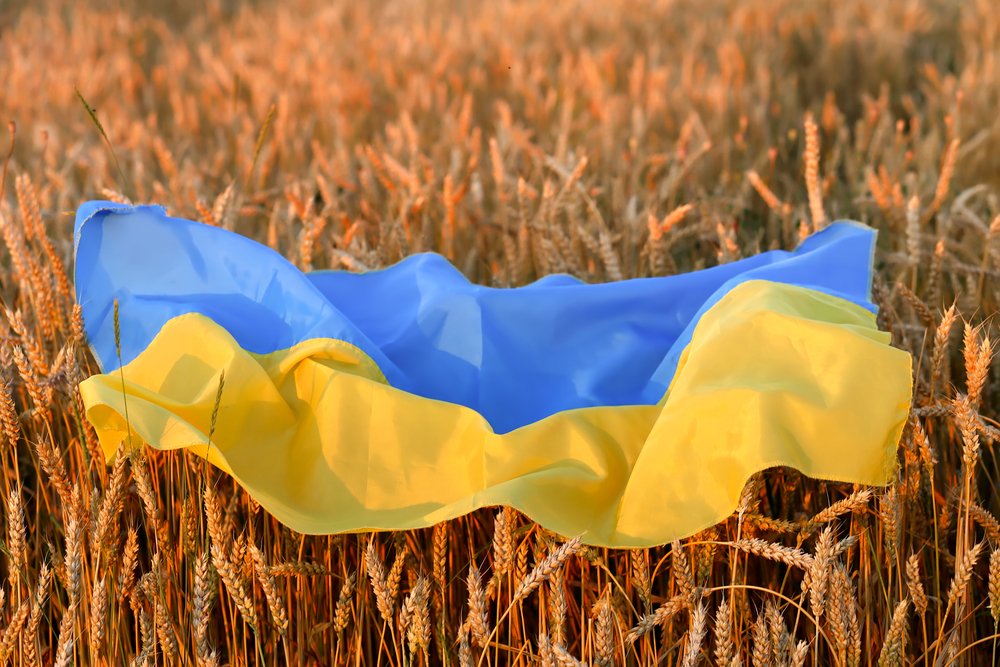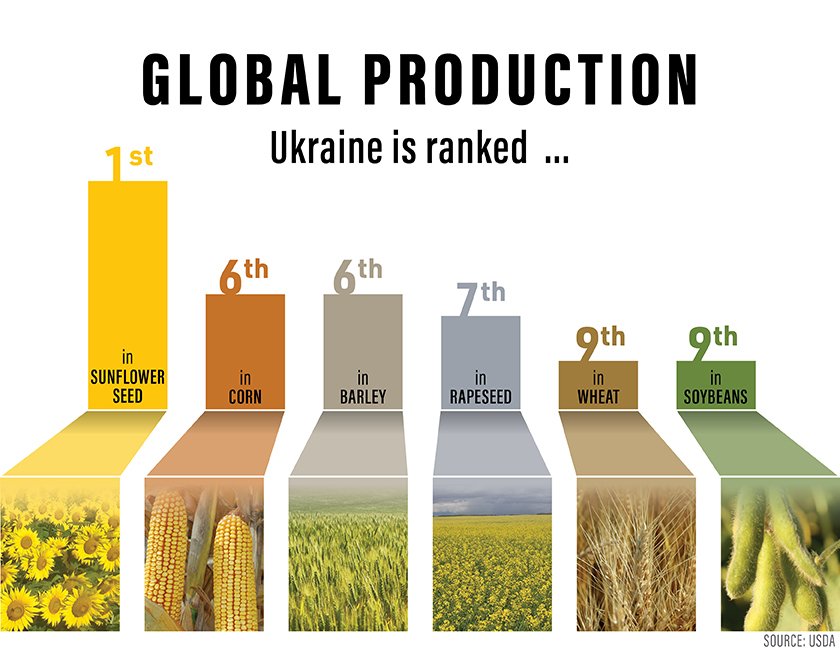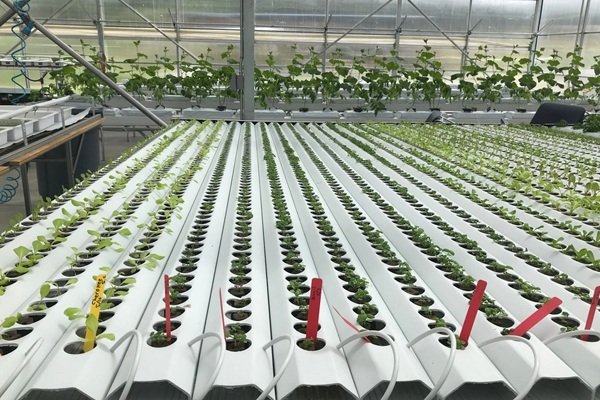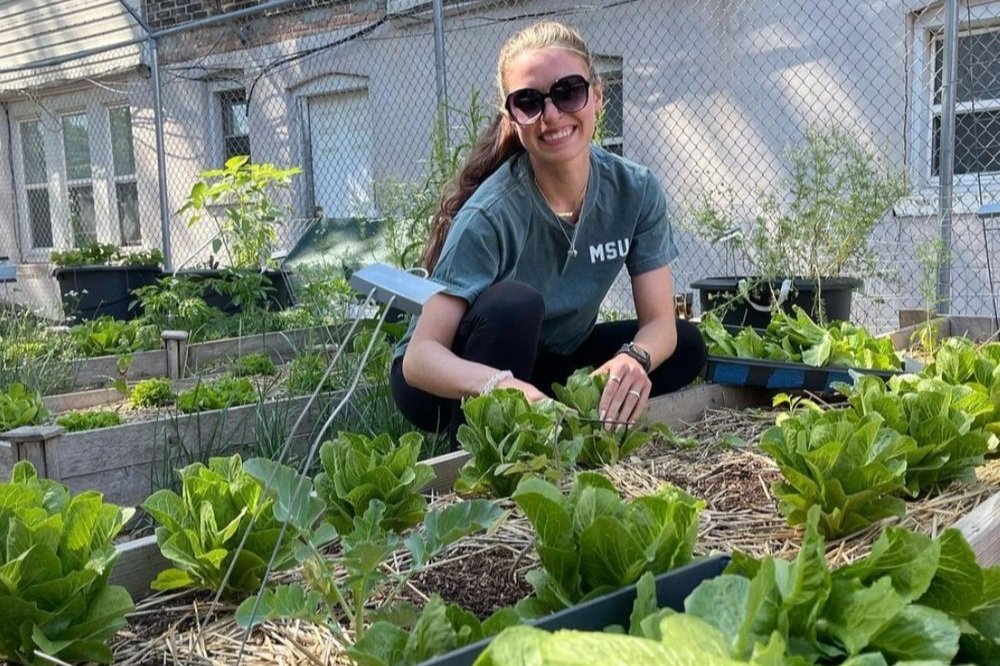Apr 21, 2022
Russian Invasion Of Ukraine Creates More Food System Challenges, Could Push 40+ Million Into Poverty

Ukraine’s flag on top of a wheat field; Photography by Dobra Kobra for Shutterstock.
Editor’s Note: This article dives into the implications of Russia’s war in Ukraine on the global food system, making an argument for localized production as a way for nations everywhere to de-risk their food supply from potential disruption by foreign actors. Agritecture stands with the people of Ukraine in opposing the Russian invasion; our critique of this war is not directed against the Russian people, many of whom oppose the actions of their government.

Graphic sourced from AgWeb with data from the USDA
Flashback to only 1 year ago, March 2021: Ukrainians were confident that their country would soon take its rightful place as an agricultural superpower. Roman Leshchenko, Minister of Agrarian Policy and Food of Ukraine, shared that “recently adopted legislation governing concessions and public-private partnerships” were set to help “upgrade Ukraine’s infrastructure and boost the country’s” crop sales to global markets.
Nicknamed “the breadbasket of Europe,” Ukraine is home to almost a quarter of the world’s super-fertile “black soil,” according to Leshchenko. With 42 million hectares of agricultural land, three-quarters of which is currently cultivated annually, “Ukraine’s farmlands are the nation’s greatest asset.”
A seemingly small country, Ukraine is the world’s fifth-largest wheat exporter, accounting for ~10% of the global export market, and is also a leading producer of sunflowers, corn, soybeans, and barley.
Today, Ukraine’s food system is in peril. And, with it, so is the global food system.
The Russian war is pushing residents to spend their days in shelters or rush to flee the country. Agritecture’s Lead Agronomist, David Ceaser, adds that “in addition to the horrific loss of life and destruction, there are serious agricultural implications too. The 2022 planting season should be occurring now and farmers are logically defending their country instead of planting, which will result in additional future grain shortages. Another side effect is the damages to critical transportation routes.”

Seasonal Ukrainian farmhands tending to Britain’s farms; photograph by Iain Masterton for Alamy Stock Photo
Ceaser also gave us a personal anecdote from working recently with Czech hops farmers, sharing that “many of the hops farms we work with have employed a high proportion of Ukrainian labor in recent years and raved about the work ethic of these individuals. Their absence will surely be missed in the Saaz region.”
Currently, there are over 5 million tonnes of grains stalled at Ukrainian ports due to closures. Private firms are expecting a 39% decrease in Ukraine’s planted grain areas, sunflower plantings to drop to their lowest in 13 years, and soybean planted areas to decrease by 11%.
The Russian military is even going as far as destroying Ukrainian agricultural machinery. Reports have been made in Kyiv, Zaporizhzhia, Chernihiv, Kherson, and Kharkiv of soldiers deliberately targeting food production.
Implications on the global agricultural system are and will be plenty. People everywhere are questioning what the future will look like if this war continues.
While food system disruptions from the Covid-19 pandemic had already driven up food prices, today, with the Russian invasion of Ukraine, the cost of food in real terms (adjusted for inflation) is now higher than during the 2008 financial crisis.

FAO Food Price Index on March 3rd, 2021; chart sourced from FAO
Recent analysis from the Center for Global Development suggests that the rises in energy and food prices “will push over 40 million into extreme poverty.” Additionally, farmers themselves are already paying almost double for fertilizer. This is due to several factors: the war and sanctions against Russian imports, the increasing price of natural gas, and the fact that both China and Russia banned certain fertilizer exports long before the war began. This is adding additional challenges to global farming operations and it will cause many farmers to abandon their planting plans simply because the ability to farm profitably under these conditions is extremely difficult.
According to Steve Mathews, Gro Intelligence’s Head of Strategy, “pain [of urgent shifts in food trade as felt by consumers] will be distributed in order of how much your food budget is relative to your overall income or wealth.”
It’s clear that this war will wreak havoc far beyond Europe.
According to a recent BBC article, the challenges will be most severe in countries dependent on global markets, particularly the Middle East and North Africa (MENA) region. BBC highlights that “more than 40% of Ukraine's wheat and corn exports went to the Middle East or Africa last year - and disruptions to supply could affect availability in these areas,” and increase “the cost of everyday food items.”

Commodity prices soar to highest level since 2008 over Russia supply fears; chart and information by Neil Hume, Tom Wilson and Emiko Terazono. The Financial Times (March 3, 2022).
In fact, according to Ceaser, “this is already a reality. Commodity pricing is future-based, and, as a result, the expected price increases are already baked into the prices consumers see in stores.” Looking at the global market, “international food and feed prices could rise by up to 20% as a result of the conflict in Ukraine, triggering a jump in global malnourishment,” according to a recent article by Reuters that quotes FAO.
The Carnegie Endowment on International Peace has analyzed the consequences on this region at length. Their research indicates that the situation is particularly dire for “countries like Lebanon and Egypt, which rely on Russia and Ukraine for their wheat supplies (comprising 96 and 85 percent of supplies respectively).”
Beyond exacerbating these pre-existing challenges, “the growing number of Ukrainian refugees and the ballooning costs of post-conflict reconstruction are raising concerns that critical humanitarian aid may be diverted from the Middle East and North Africa to address the fallout from the Ukraine conflict. For the millions of Palestinians, Lebanese, Yemenis, Syrians, and others who live in countries experiencing conflict, catastrophic economic meltdowns, and increasing humanitarian needs, this would be equivalent to shutting down critical life support.”
As a result of these concerns, several countries, including Hungary, Indonesia and Argentina, are imposing trade barriers on food exports to keep food supply as local as possible and control domestic prices. Referring back to the 2007 food price hike, analysts believe that such “hasty export restrictions” will, in truth, continue to “exacerbate shortages.” During this time, “keeping trade open is crucial to enable farmers to respond, as is avoiding sanctions on food and fertilizer.”
The impacts from this war are complex and difficult to fully summarize or understand, just as was the case in the early days of the pandemic. No one solution can repair the many negative externalities this invasion is having on the global food system.
Having said this, there are small things we can do as conscious eaters, sustainable farming advocates, and general food stakeholders to lessen the war's toll on the global food system, such that we continue to support the most vulnerable of populations through this difficult time and prevent others from becoming similarly vulnerable. Here are some actions that may help:
-
Donate to Ukrainian food relief efforts - food is becoming increasingly unaffordable; take this chance to help out those in need. There are also a number of organizations providing food relief in Ukraine.
-
Start growing your own food - with fewer farmhands and farmlands in use, the food system is being stretched thin to feed the world’s population. Take this opportunity to start growing your own fruits and vegetables. For outdoor home gardening, our team recommends the content from Epic Gardening, the EFUA, and the GrowSquares' veggies and herbs kit. For indoor growing, Lettuce Grow’s Farmstand, TowerGarden, Hamama’s Grow Kits, Click and Grow’s smart systems, and Smallhold’s Mushroom kit are some good low-cost places to start. Of course for budding entrepreneurs, Agritecture’s blog and YouTube channel have a whole host of resources.
-
Compost your food waste - Composting is a great way to make sure food waste is turned into valuable fertilizer for plants (and reduce methane production at landfills). If you have space at home, consider starting a compost pile or worm bin. You can also support local composting even if you can’t compost at home by taking your compostable waste to a community composting site in your area.
-
Advocate for scarce arable land to be used to feed people rather than to fuel cars. For the past several years, the UK and other European countries have “been diverting some of their best arable land from food to fuel production. Between 2019 and 2021, farmers in England raised the area of land used to make biogas by an astonishing 19%.” You can push your local authorities to dedicate more of our scarce arable land to food production.
Considering the dependence many countries have on Russian fertilizers - not to mention the already high emissions from traditional nitrogen fertilizer production and limitations of mining phosphorus - there is a clear need to build more circular and local food systems. Here are just some companies that should be on your radar who are contributing to this brighter future:

Re-Nuble is decarbonizing the food value chain by converting food waste into organic hydroponic nutrients

Floating Farm NL is using organic waste streams for cow feed

Plant Chicago is piloting the first local circular economy network for small food businesses

WeRadiate NY is redefining the value of waste by allowing greater volumes of organic waste to be turned into healthy, high-quality compost and kept local to Brooklyn, New York.

Ÿnsect uses vertical farming to transform insects into premium, high-value ingredients for aquaponics.

Invertapro raises and processes yellow mealworms into a protein-rich ingredient for food products and animal feed.
“Even though the atrocities in Ukraine might be very far away from where you live, remember that any action you take, no matter how small, will have an impact. And, if you take that action with conviction, the impact will be even greater. Our world is a complex set of systems, the food system being one of the most important, and your actions are critical to helping the world through this difficult period. ”


